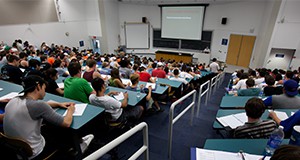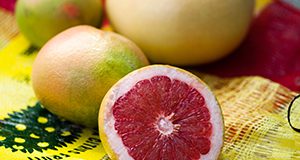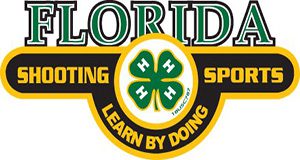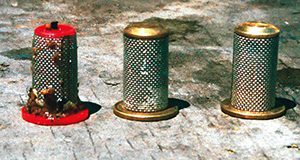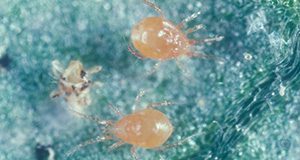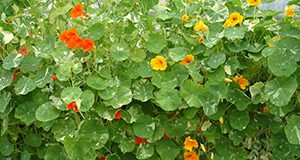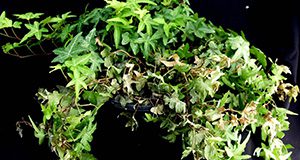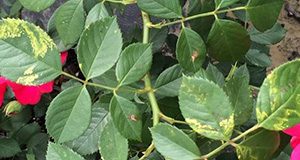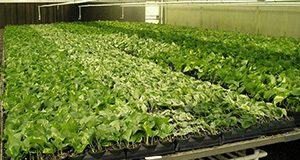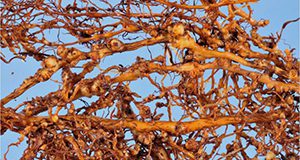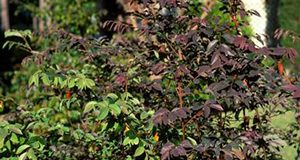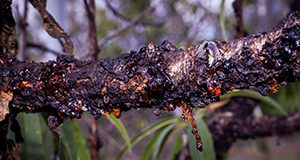Research has found that youth involvement in school gardens leads to numerous benefits. However, teachers and support organizations must overcome barriers for garden sustainability. This 4-page document discusses barriers for school garden success and how Extension faculty can help education professionals overcome them. Written by Susan Webb, John Diaz, and Catherine Campbell and published by the UF/IFAS Department of Agricultural Education and Communication, August 2018.
http://edis.ifas.ufl.edu/wc315
Author: Sarah Chrisien
How Many Meals Should I Eat Each Day?
For older adults who want to stay healthy, it’s a common question: should I eat three meals a day, or is two adequate? Also, how much should I snack? This 2-page publication discusses the appropriate amount of daily food consumption in older adults. Written by Wendy J. Dahl and Zainab Alyousif and published by the UF/IFAS Department of Food Science and Human Nutrition, August 2018.
http://edis.ifas.ufl.edu/fs313
Preparing to Work with Generation Z
Members of Generation Z, the incoming generation of college graduates and future members of the workforce, will require specific leadership and support to reach their potential and contribute to the needs of the agriculture industry. This 3-page publication describes Generation Z and offers best-known practices for preparing this generation to contribute to Florida’s agriculture and natural resource industries. Written by Celia Elizabeth Suarez and Valerie McKee and published by the UF/IFAS Department of Agricultural Education and Communication, August 2018.
http://edis.ifas.ufl.edu/wc311
The Health Benefits of Grapefruit Furanocoumarins
Grapefruits are known for their numerous health benefits, specifically anti-inflammatory, anti-cancer, anti-obesity, and bone-building effects that are the result of natural chemicals called furanocoumarins. This 4-page document discusses the health benefits of grapefruit furanocoumarins. Written by Yu Wang and Laura Reuss and published by the UF/IFAS Department of Food Science and Human Nutrition, August 2018.
http://edis.ifas.ufl.edu/fs311
Dietary Fiber and Chronic Disease
Dietary fiber supports health in various ways. This 2-page document describes the relationships between dietary fiber and prevention and treatment of chronic disease. Written by Wendy J. Dahl and published by the UF/IFAS Department of Food Science and Human Nutrition, August 2018.
http://edis.ifas.ufl.edu/fs314
Salt: Should I Cut Back?
Sodium is important for our body to maintain fluid balance, blood volume, and blood pressure; however, many people consume more dietary sodium (from salt) than needed. This 3-page publication explores the health effects of excessive sodium intake and ways to decrease intake of this mineral. Written by Asmaa Fatani, Nancy J. Gal, and Wendy J. Dahl and published by the UF/IFAS Department of Food Science and Human Nutrition, August 2018.
http://edis.ifas.ufl.edu/fs312
Florida 4-H Archery Record Book
The purpose of this 13-page Florida 4-H Archery Record Book is to help you document your growth, development, and progress as a 4-H member. Written by Julie Pigott Dillard and Gerald Culen and published by the UF/IFAS 4-H Youth Development Department, August 2018.
http://edis.ifas.ufl.edu/4h392
Clean the Sprayer to Avoid Crop Injury
The objective of this 5-page document is to present the correct clean-out procedure for spray equipment following pesticide use. Written by Frederick M. Fishel and published by the UF/IFAS Agronomy Department, August 2018.
http://edis.ifas.ufl.edu/pi277
Susceptibility of Phytoseiulus persimilis and Neoseiulus californicus (Acari: Phytoseiidae) to Commonly Used Insecticides Approved for Managing Arthropod Pests in Florida Strawberries
The aim of this 9-page document is to inform Florida strawberry producers and Extension personnel on the compatibility of registered miticides and insecticides with commercially available predatory mites used as biological controls. Written by Braden Evans, Karol Krey, and Justin Renkema and published by the UF/IFAS Entomology and Nematology Department, August 2018.
http://edis.ifas.ufl.edu/in1216
Sea Lavender (Heliotropium gnaphalodes L.): Identification and Uses
Sea lavender is a native plant found naturally along the Atlantic coast of central and south Florida. This 7-page document discusses this species’ identification and uses. Written by Stephen H. Brown, Marc S. Frank, and Andrew K. Koeser and published by the UF/IFAS Environmental Horticulture Department, August 2018.
http://edis.ifas.ufl.edu/ep563
Production of Edible Flowers in Florida
Edible flowers can be a fresh addition to main dishes, side dishes, desserts, and drinks. Their value stems from their visual appeal, taste, nutritional content, and medicinal properties. This 7-page document examines the production and distribution of edible flowers in Florida. Written by Caroline de Favari Tardivo and Geoffrey Meru and published by the UF/IFAS Horticultural Sciences Department, August 2018.
http://edis.ifas.ufl.edu/hs1321
English Ivy (Hedera helix): Identification and Control of Diseases in Commercial Greenhouse Production and in Landscapes
English ivy has grown in popularity over the last few years as both an indoor and outdoor ornamental vining plant. While English ivy is very disease resistant, there are a few major diseases that will cause economic loss in production and landscape plantings. This 6-page document will assist residential or commercial property owners in identifying various English ivy diseases. Written by David J. Norman and G. Shad Ali and published by the UF/IFAS Plant Pathology Department, August 2018.
http://edis.ifas.ufl.edu/pp339
Rose Mosaic Virus: A Disease Caused by a Virus Complex and Symptoms on Roses and Management Practices
Rose mosaic virus disease is one of the most economically important diseases affecting roses, because a single symptomatic leaf can result in the rejection of complete shipments for wholesale or retail rose producers. It continues to be a problem in nursery production and landscapes. This 5-page document discusses the causes, symptoms, and management of this disease. Written by Susannah da Silva, Binoy Babu, Mathews L. Paret, Gary Knox, Fanny Iriarte, Barron Riddle, Matt Orwat, Shawn T. Steed, E. Vanessa Campoverde, and Svetlana Y. Folimonova and published by the UF/IFAS Plant Pathology Department, August 2018.
http://edis.ifas.ufl.edu/pp338
Florida 4-H Air Rifle & Smallbore Rifle Record Book
The purpose of this 13-page Florida 4-H Air Rifle/Smallbore Rifle book is to help 4-H members document their growth, development, and progress in the titular activities. Written by Julie P. Dillard and Gerald Culen and published by the UF/IFAS 4-H Youth Development Department, August 2018.
http://edis.ifas.ufl.edu/4h391
Pothos (Epipremnum aureum) Diseases: Identification and Control in Commercial Greenhouse Production
Pothos is a tropical ornamental vine that has been grown commercially in the US for almost 100 years and is used for a variety of aesthetic purposes. This 5-page publication addresses identification and treatment of common diseases encountered during greenhouse production of pothos. Written by David J. Norman and G. Shad Ali and published by the UF/IFAS Plant Pathology Department, July 2018.
http://edis.ifas.ufl.edu/pp340
Peach Root-knot Nematode
One of the production issues that peach growers in Florida must contend with is plant-parasitic nematodes. One such species is the more recently discovered peach root-knot nematode, Meloidogyne floridensis, which is the subject of this 5-page publication. Written by Mary Ann D. Maquilan, Ali Sarkhosh, and Donald Dickson and published by the UF/IFAS Horticultural Sciences Department, July 2018.
http://edis.ifas.ufl.edu/hs1320
Key Plant, Key Pests: Chinese Fringe (Loropetalum chinense)
This 3-page document is one in the Key Plant, Key Pests series. It helps identify common pests found on the Chinese fringe. Written by Juanita Popenoe, Caroline R. Warwick, and Jianjun Chen and published by the UF/IFAS Environmental Horticulture Department, July 2018.
http://edis.ifas.ufl.edu/ep562
Using Video Messages to Promote Residential Adoption of Fertilizer Best Practices
Residents may be inclined to over-fertilize their lawns due to pressure to maintain a neighborhood aesthetic. However, this activity can affect water quality. This 3-page document describes a study that was conducted in order to determine if video messages about fertilizer best management practices influenced perceptions of fertilizer use among residents. Written by Amanda D. Ali, Laura A. Sanagorski Warner, Peyton Beattie, Alexa J. Lamm, and Joy N. Rumble and published by the UF/IFAS Department of Agricultural Education and Communication, July 2018.
http://edis.ifas.ufl.edu/wc309
Peach Rust (Transchelia spp.)
Peach rust is a fungal disease that attacks plants like peach, nectarine, almond, plum, apricot, and cherry. Infections can be particularly severe in warm weather with high rainfall, so Florida summers provide favorable conditions for peach rust development. This 6-page document describes the characteristics and management of peach rust. Written by Daniel Mancero-Castillo, Ali Sarkhosh, Courtney Ligon, Mercy Olmstead, and Philip Harmon and published by the UF/IFAS Horticultural Sciences Department, July 2018.
https://edis.ifas.ufl.edu/hs1263
Fungal Gummosis in Peach
Peach fungal gummosis (PFG) is a vascular disease that limits the growth and yield of peach orchards in the southeastern United States. This 6-page document discusses the symptoms and management of PFG. Written by Daniel Mancero-Castillo, Ali Sarkhosh, Sara Sherman, Mercy Olmstead, Philip Harmon, and Thomas Beckham and published by the UF/IFAS Horticultural Sciences Department, July 2018.
https://edis.ifas.ufl.edu/hs1265


